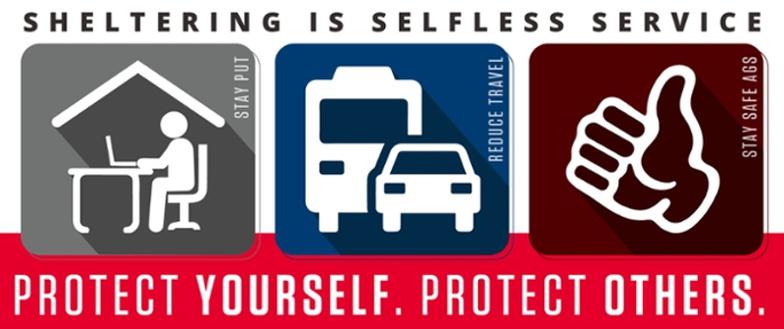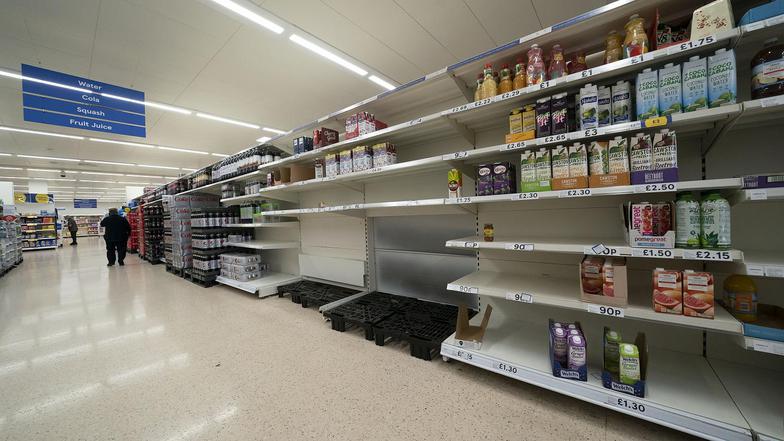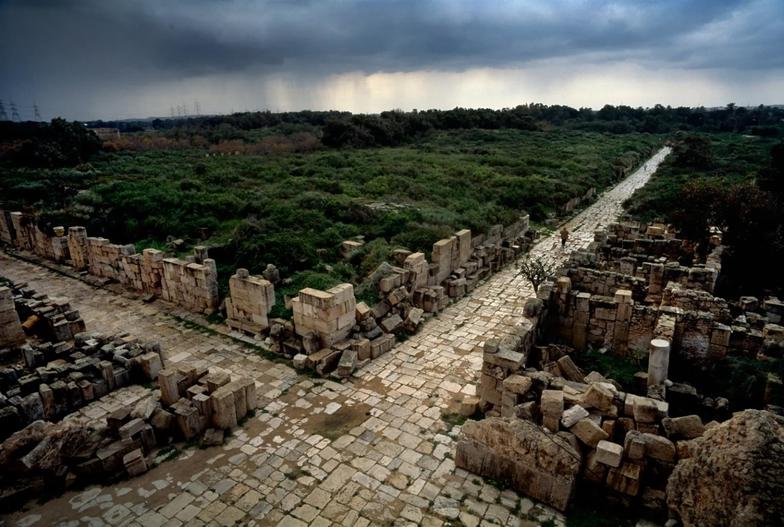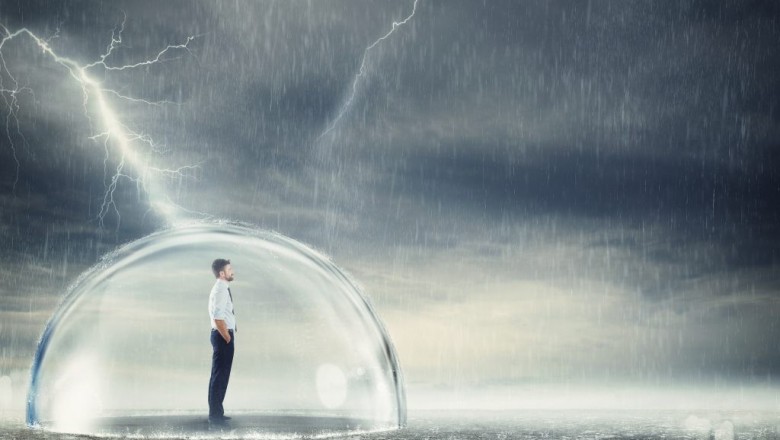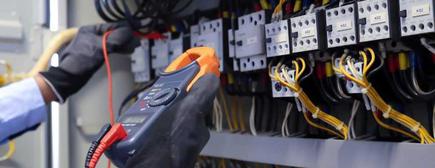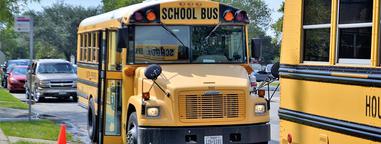AlreadyPrepared.com
AlreadyPrepared.com Blog
Emergency Preparedness & Planning
Issues - Strategies - Solutions - Resources
How to Shelter-In-Place
1. Lock all Car & House Windows including Interior & Exterior Doors.
Your windows and doors should be locked and shut tight. Any open windows or doors will present an extreme danger to all the passengers inside your vehicle and residents inside your home.
2. Turn off all fans, heating and A/C systems to avoid drawing in outside air.
If you are inside your home or vehicle ensure you turn off all the fans for heating or air conditioning. That includes internally circulating air inside your car. While many manufacturers have significantly improved air filters, it's never worth the risk of drawing deadly chemicals into your vehicle or home.
3. Get out your emergency kit, radio and N95 masks
Take out the N95 masks that are included inside your emergency kit and securely fasten them around your mouth and nose. Take out your emergency radio and listen for any emergency broadcasts regarding the shelter-in-place advisory.
4. Go to a room that's above ground with no windows
If you're inside your home, go to a room that has no windows and is above ground level. Doing this ensures you have the best possible chance of reducing your exposure to poisonous chemicals. Some chemicals are heavier than others and can't travel above ground. For that reason, its prudent to take shelter above ground.
5. Use duct tape located inside your emergency kit to seal all cracks around doors and vents.
Use the duct tape from your emergency kit to seal all the cracks around your windows and doors; inside your vehicle or at home. The gap between your doors and windows becomes the most vulnerable point of exposure. A tiny hole can expose you to harmful chemicals and result in significant injury. For this reason, duct tape is used to help create an airtight seal to ensure your safety.
Follow these steps and be ready the next time an order to shelter-in-place is announced. Remember have your personal emergency kit and roadside emergency kit available at all times, it's not just a bag, it's your family's life.
EarthDate: July 2, 2025
Below is an important message...
ALERT: Russia To The United States In 86 secs...
86 seconds!
That’s how long it would take for a missile to reach the United States if it was launched from Russia…
Let that sink in.
That’s less time than it takes most people to read this information.
And the worst part is, we wouldn’t even see it coming.
But while everyone is worried and looking to the sky for signs of potential danger
A bigger threat is lurking.
One that we have no way of defending against.
While any democratic administration is preoccupied with pronouns, restrictions, and censoring its people —
The Ruskies have been silently sharpening their ax. And they’re ready to deliver one final blow.
According to a recent government document, Putin’s people have already infiltrated America’s Achilles’ Heel. And if this report is right, may God have mercy on us
PLANNING FOR A
COMING FOOD CRISIS...
We are very concerned that most people in the United States are treating the current (and coming) food crisis as no big deal.
Most people actually believe the government is going to help them and that the illegitimate President Biden and his buffoons in the White House are going to solve everything…
Even though, we’ve been warned multiple times and the head of the World Food Program at the UN has said the food crisis is going to be “Hell on Earth.”
Also, frighteningly, as one news outlet reported…
“Levels of food insecurity have doubled from 2019, increasing from 135 million to 276 million.”
And there’s this too…
“Dozens of countries risk protests, riots and political violence this year as food prices surge around the world, the head of the food-aid branch of the United Nations has warned.”
So, what is your plan to survive the worst food crisis in decades?
Here’s a list of things you should be doing (in no particular order) …
-Emergency supply of cash (at least 3 months’ worth of living expenses)
-Plenty of garden tools
-Chickens
-Generators (solar, propane, gas)
-Canned fruit
-Water filters
-At least 5,000 rounds of ammunition for every caliber of gun
Get your hands on and immediately store...
-Batteries
-Extra razors so you can shave
-Multiple solar panels for your solar generator
-Large emergency first aid kit
-Extra antibiotics
-Extra allergy medicine (I take Zyrtec)
-Lots of peanut butter
-Powdered milk
-Several 5-gallon buckets
-Toilet paper
-Lots of extra soap, shampoo, tooth brushes, toothpaste
-Food in buckets (grains)
-#10 cans of food storage
-At least 6 months of survival food pouches for every member of your family.
Remember, you will always need more food than you think.
Plus, you may be helping others as well.
Keeping Up With Lightning Protection And
Other Important Services For Safety And Reliability
A lightning protection system (LPS) is a network of parts that is set up to keep lightning from harming buildings and electrical equipment. Conducting materials, grounding electrodes, air terminals (lightning rods), and bonding components are all common parts of these kinds of systems.
To reduce these risks, it is important to have full lightning protection systems that need to be kept up all the time.
How to Understand a Lightning Protection System
A lightning protection system (LPS) is a network of parts that is set up to keep lightning from harming buildings and electrical equipment. Conducting materials, grounding electrodes, air terminals (lightning rods), and bonding components are all common parts of these kinds of systems. When an LPS is made and put in the right area, there is reduced likelihood of fire, damage to buildings, and electrical surges since it gives lightning current a low-resistance path.
How to take care of lightning protection and why it's important
The best approach to make sure that the Lightning Protection Maintenance works well and easily is to maintain it up to date. Routine maintenance includes checking connections and bonding, testing grounding systems and conductors, and looking at things visually.
Some important things to do to keep lightning protection working are:
A visual check can find things like physical damage, rust, loose connections, and missing pieces.
To make sure the system can withstand lightning current, it has to pass continuity testing. This means checking that the wires and connectors are all connected to each other.
Routine maintenance that finds any problems before a lightning incident can save the system from failing and make it safer.
Keeping electrical devices safe
A lightning protection system protects the building from lightning strikes and switching operations What is included are:
Checking SPDs for signs of wear, discoloration, or damage.
During functional testing, we check how well the gadget can clamp voltage spikes.
Removing and replacing SPDs that have stopped working or are broken because of prior surges.
How lightning may affect things
Before building or changing a lightning protection system, you need to do a lightning risk analysis. This approach figures out how probable it is that lightning will hit a given place and how much harm it may inflict if it does.
A full lightning risk study includes things like these:
Places where lightning strikes more often need more protection, and this is affected by where they are.
Height and construction of buildings: Buildings that are very tall or have materials that might catch fire are more dangerous.
Buildings that host important activities or a lot of people need stronger security measures.
Looking at the current configuration to see if there are any gaps or weak points
A lightning protection system is made based on the findings of a risk analysis to find the right balance between safety and cost-effectiveness. It also helps decide which inspections and maintenance programs are most important.
Why Earthing Audits Are Important
Grounding, sometimes called earthing, is a prerequisite for any lightning protection system. This channel lets lightning safely fade into the ground. An earthing audit is a systematic check of how well the earthing system works and how well it is working.
An audit of the lightning protection system might show problems with the earthing system. After that, you may adjust the connections, add extra grounding rods, or make the dirt more conductive.
Putting these services together for complete security
For complete lightning safety, it is important to combine surge protection inspection, lightning risk assessments, earthing audits, and lightning protection maintenance into one program.
Companies should use qualified professionals who know how to test lightning protection systems and what the rules are. Facility managers and maintenance workers may assist keep the workplace safe by taking part in regular training and awareness programs.
Conclusion
When lightning strikes, it may be quite dangerous for structures, machines, and humans. The first step in lowering these risks is to put in place a well-planned lightning protection system.
Regular Surge Protection Inspection, lightning risk assessments, earthing audits, and lightning protection maintenance are all important to keep the system working effectively.
Strategies For Preparedness
In Our Communities
A culture of preparedness is fostered by actively engaging community members in resilience-building efforts, moving beyond top-down mandates to empower citizens at the grassroots level. Effective strategies combine public education, resource-sharing, and collaborative planning to build social cohesion and collective capacity before a disaster strikes.
Promote public education and awareness
Integrate disaster awareness into daily life. Make emergency preparedness a routine part of community life, not just an annual or monthly campaign. This can include integrating preparedness education into school curricula, civic group meetings, and employee training.
Leverage multiple communication channels. Use a variety of platforms to disseminate information, ensuring that messages reach a broad and diverse audience. Strategies include using:
Trusted local messengers like faith-based organizations and community leaders.
Modern platforms like social media and mobile apps to provide alerts, updates, and educational materials in real-time.
Traditional media like local newspapers, newsletters, and bulletin boards.
Provide accessible, culturally relevant information. Tailor communication and resources to meet the specific needs of diverse populations, including those with disabilities, non-English speakers, and older adults. All materials should be available in multiple formats, such as plain language, large print, and Braille, and interpreters should be provided for public meetings.
Strengthen social capital and build relationships
Encourage grassroots initiatives. Support and empower community members to organize and lead preparedness efforts themselves.
Examples include:
Neighborhood Watch programs, which have expanded their focus from crime prevention to include disaster readiness and emergency response.
Community Emergency Response Teams (CERTs), which train citizens in basic response skills like first aid and search and rescue.
Youth preparedness programs, which teach emergency skills to children and empower them to influence their families and peers.
Strengthen trust with first responders. Regular, positive interactions between community members and emergency services personnel can foster trust and improve cooperation during a crisis. Activities can include joint training drills, school visits, and community safety fairs.
Build a culture of mutual aid. Encourage neighbors to look out for one another and organize local support networks before a disaster. This strengthens interpersonal connections and enables faster, more effective informal response in a crisis.
Empower individuals and organizations
Provide actionable training. Offer practical, hands-on training sessions and educational workshops on first aid, CPR, and other survival skills. Make sure to offer these trainings in accessible and convenient locations.
Engage the business community. Local businesses are vital to both preparedness and recovery. Communities can encourage them to:
Develop business continuity plans and practice emergency procedures with employees.
Form partnerships with local emergency services to share resources and coordinate efforts.
Sponsor community events and education campaigns to raise awareness.
Organize community-led risk assessments. Involve residents in identifying and analyzing local hazards, vulnerabilities, and resources. This participatory approach ensures that preparedness plans are tailored to the community's unique needs and priorities.
Strategies For Integrating Emergency Preparedness Readiness Into
Our Public Schools
Integrating preparedness into school curricula can create a lasting culture of resilience by equipping students with lifelong safety skills. Rather than treating it as a standalone subject, schools can weave preparedness into existing coursework and activities to make it a seamless, engaging, and relevant part of the student experience.
How to embed preparedness across subjects
Science and STEM classes
Study local hazards: Use a project-based learning approach where students research and report on natural disasters common to their area, such as hurricanes, floods, or wildfires.
Design for resilience: Challenge engineering and technology students to build flood-resistant homes, design robots for search and rescue, or develop new disaster alert technologies.
Simulate emergencies: Hold health-focused STEM activities where students learn and practice triage, first aid, and CPR.
Analyze data: In math or data science classes, analyze the frequency of past disasters in the region to look for patterns and help forecast future risks.
History and social studies
Case studies: Explore historical disasters and how different communities responded. Students can analyze the effectiveness of past emergency plans and draw lessons from both successes and failures.
Policy and government: Examine the role of government agencies like FEMA during and after disasters. This can lead to discussions about policy-making, resource allocation, and social equity in recovery efforts.
Community resilience: Connect students with local emergency managers and first responders to learn about their roles and responsibilities. This builds trust and shows how preparedness is a shared community effort.
English and language arts
Write for a purpose: Have students write informational guides or create public service announcements (PSAs) about emergency preparedness for different audiences, such as children or senior citizens.
Journaling and storytelling: Encourage students to keep journals to reflect on emergency drills or discuss their feelings about disasters. For older students, literary analysis of disaster-related texts can help them process fear and trauma.
Physical education and health
Drills and skills: Regularly practice evacuation, shelter-in-place, and lockdown drills. After each drill, hold a discussion to evaluate what went well and identify areas for improvement.
First aid and CPR: Offer opportunities for students to earn certifications in first aid and CPR, providing them with critical, hands-on life-saving skills.
Mental health: Teach students coping mechanisms for stress and anxiety related to emergencies. Provide resources for emotional support and incorporate mental health discussions into emergency drills.
Implementing preparedness with community partners
Invite guest speakers: Invite local first responders, health officials, and emergency managers to speak to students about their experiences and preparedness tips.
Organize school-wide events: Host community events like a "Fire Prevention Day" or a "Safety Fair" where students, families, and community groups can interact and learn together.
Involve parents and guardians: Provide resources and encourage students to create a family emergency plan. This reinforces learning and helps build community-wide resilience from the ground up.
Collaborate with local agencies: Partner with organizations like the American Red Cross for training and disaster simulation exercises.
Resources To Support Emergency Preparedness In Our Public Schools
Many national, state, and local organizations offer free resources, tools, and training to help schools develop and implement robust emergency preparedness curricula. These resources provide curricula tailored to different age groups and address a variety of natural and man-made hazards.
Federal resources
FEMA's Ready Kids and Student Tools for Emergency Planning (STEP): These programs from the Federal Emergency Management Agency (FEMA) offer resources designed for various age levels.
STEP is a curriculum specifically for students in grades 4–5.
Ready Kids provides videos, fact sheets, and online games that cover the basics of emergency preparedness for different disasters.
Readiness and Emergency Management for Schools (REMS) Technical Assistance Center: Operated by the U.S. Department of Education, REMS provides guidance and tools for developing comprehensive, all-hazards Emergency Operations Plans (EOPs) for schools and higher education institutions.
Resources include the EOP Assist software, which helps schools customize their emergency plans, and the SITE ASSESS app for conducting school safety inspections.
REMS also provides training packages on specialized topics, such as resilience for educators after a crisis.
SchoolSafety.gov: This federal website is a clearinghouse of information and resources for school safety, security, and emergency management.
It offers guidance, training, and funding opportunities related to a variety of school safety issues, including emergency planning, mental health support, and threat assessment.
Centers for Disease Control and Prevention (CDC): The CDC offers guidance and resources related to health-specific emergencies in schools.
Their School Preparedness Unit (SPU) develops partnerships and materials to help schools prepare for public health emergencies.
Resources are available to help schools and families manage issues related to disaster recovery, trauma, and coping with stress.
Nonprofit and local resources
American Red Cross: The Red Cross offers educational programs and materials for both students and staff.
The Pillowcase Project is a free program for students in grades 3–5 that teaches coping skills and safety information for local hazards.
Prepare with Pedro is another program aimed at younger students, featuring a storybook and activities to prepare for home fires or local hazards.
For staff, the Red Cross offers group training in CPR, First Aid, and Automated External Defibrillator (AED) use.
Community Emergency Response Teams (CERT): Many communities offer CERT programs that train local residents, including students, in basic disaster response skills such as fire safety, medical operations, and light search and rescue.
Some areas, like Los Angeles, have Teen CERT programs specifically for high school students.
Local and state emergency management agencies: Most state and local emergency management offices provide resources, training, and support tailored to specific regional hazards.
In Hillsborough County, Florida, for example, the CERT program offers free training sessions to residents.
Interactive learning tools: Organizations produce creative and engaging resources to teach kids about preparedness.
Ready 2 Help is a card game from FEMA and the American Red Cross that teaches kids how to respond in an emergency.
The Extreme Event role-playing game from the National Academies of Sciences helps middle and high school students build community resilience in a simulated disaster.


